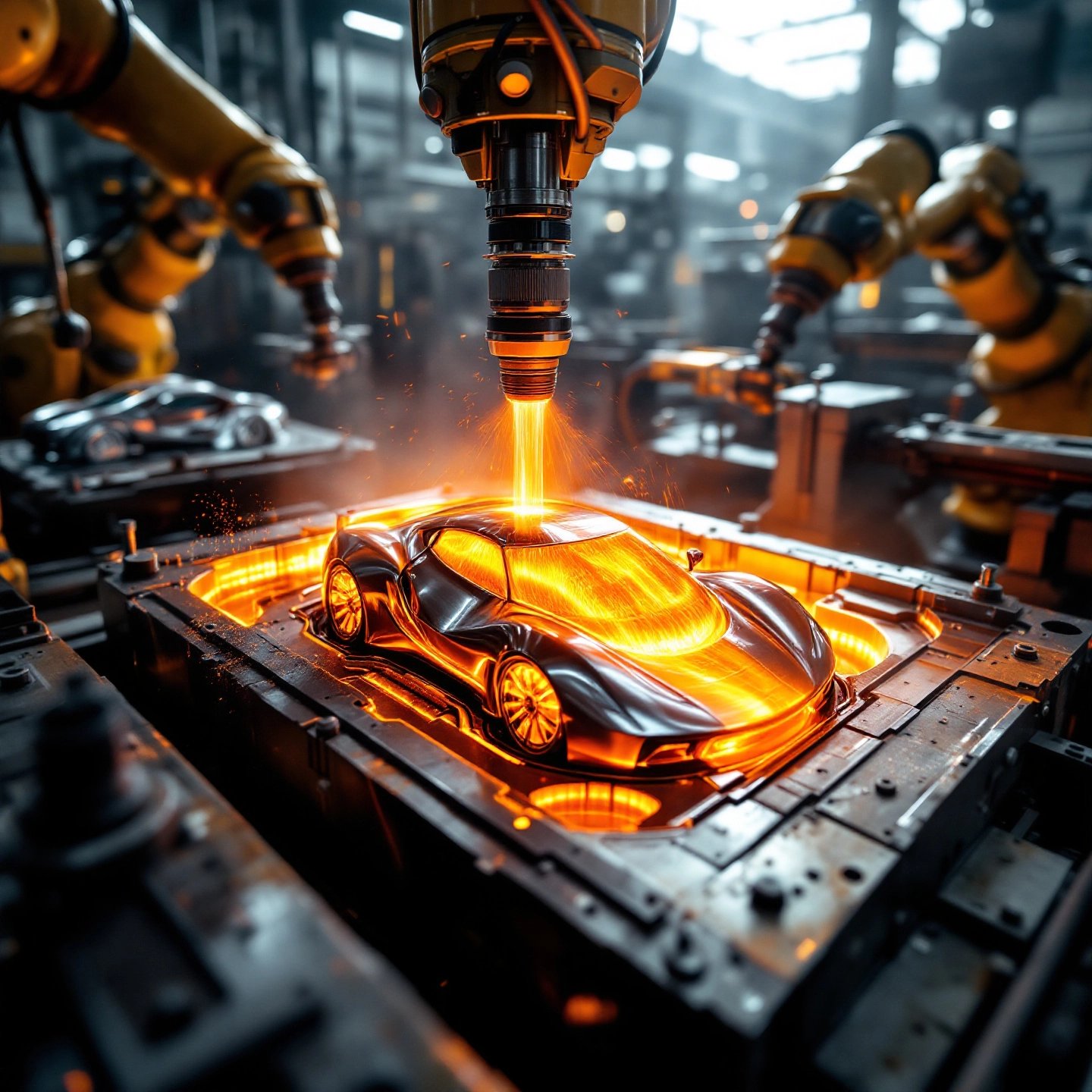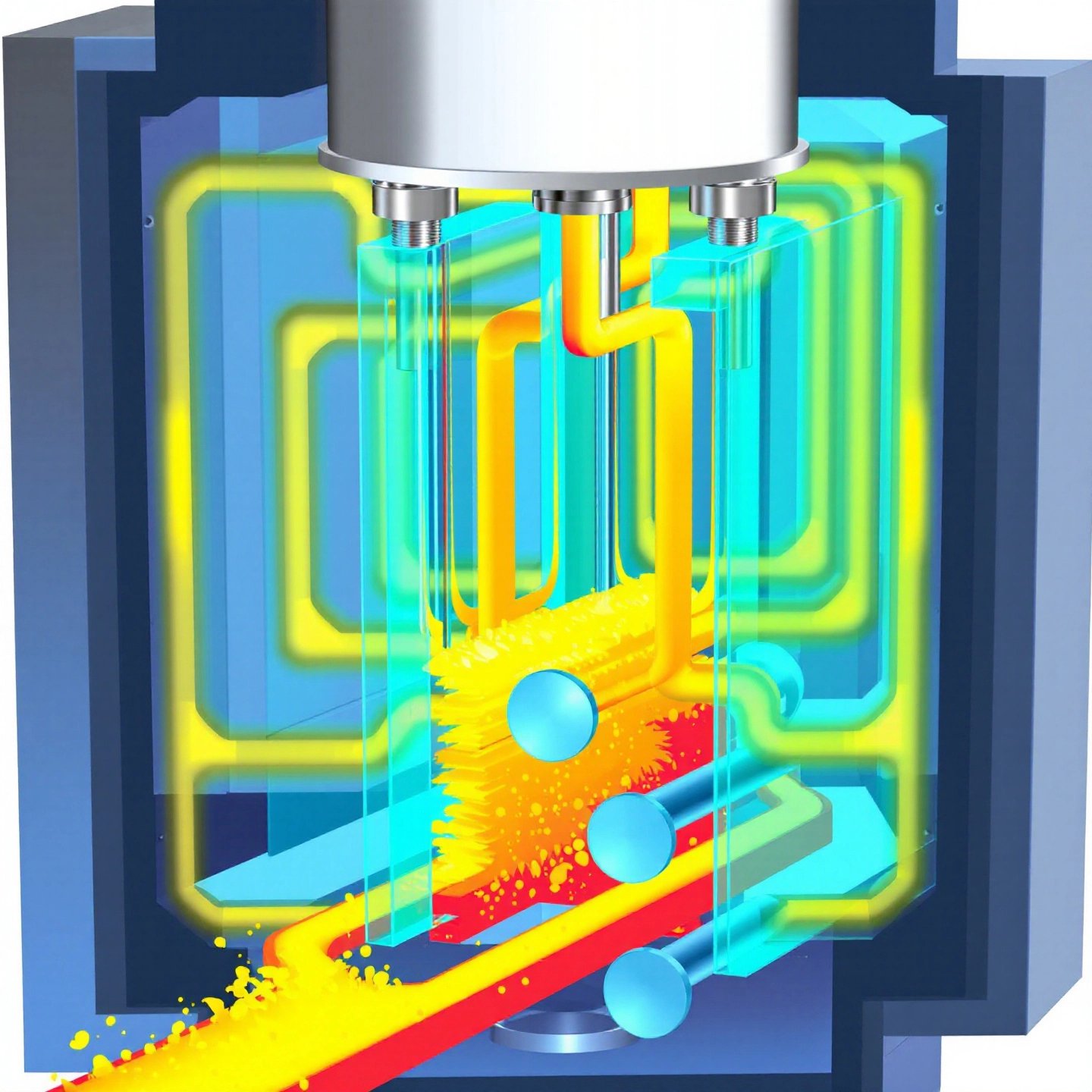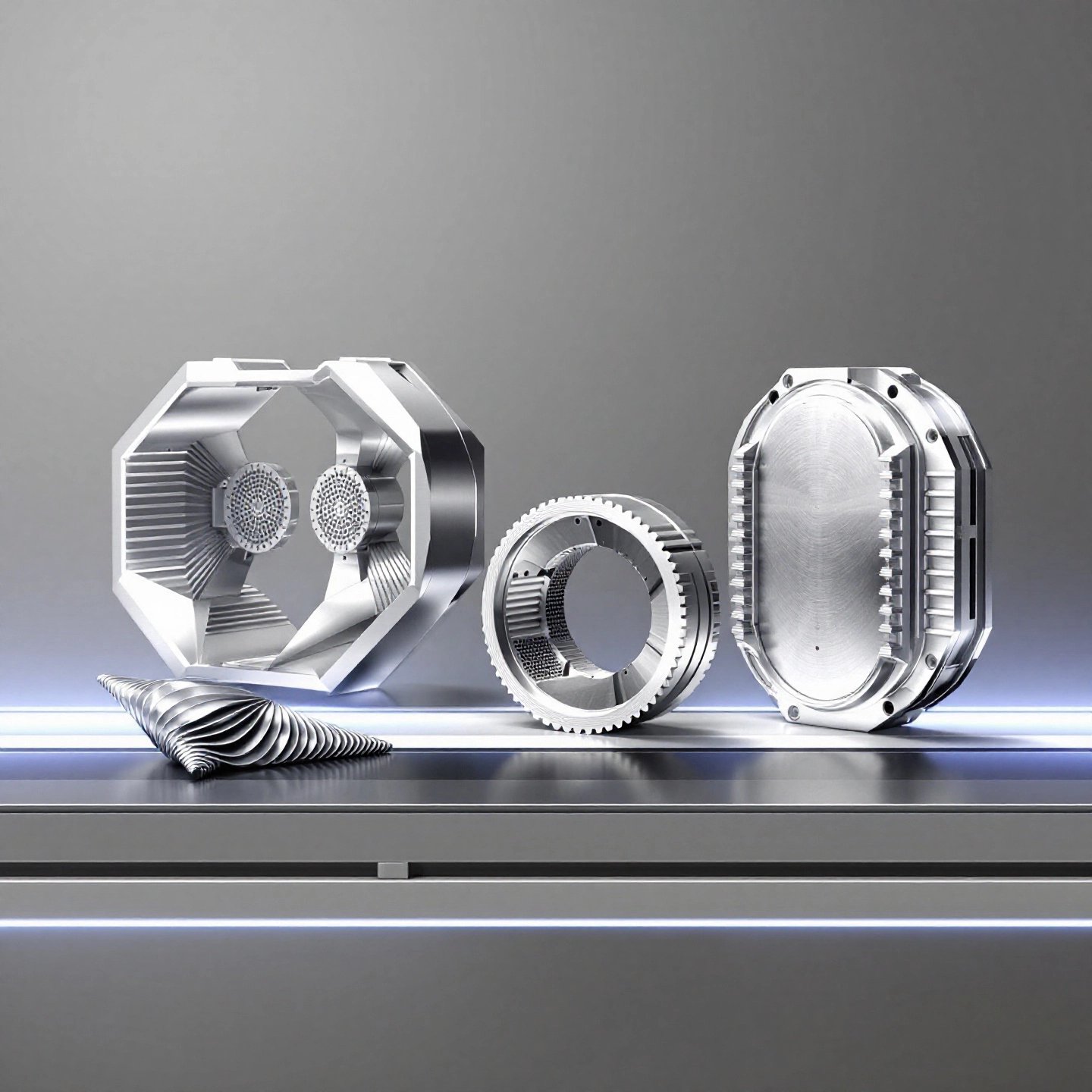
What if manufacturers could produce lightweight, durable components at scale while meeting strict efficiency standards? Aluminum alloys make this possible. With a strength-to-weight ratio surpassing steel and exceptional corrosion resistance, these alloys have become indispensable in modern manufacturing. Over 70% of automotive die-cast parts now use aluminum, according to Mordor Intelligence, driven by the need for fuel-efficient vehicles and emission reductions.
High-Pressure Die Casting (HPDC) amplifies aluminum's advantages. This process injects molten metal into steel dies at pressures exceeding 1,000 bar, enabling:
Industries demanding precision and volume leverage HPDC extensively:
| Industry | Application | Common Alloys |
|---|---|---|
| Automotive | Engine blocks, transmission housings | A380, A390 |
| Aerospace | Avionics housings, wing components | A206, A356 |
| Consumer Electronics | 5G antenna frames, heat sinks | A413, A360 |
This article explores how alloy chemistry and HPDC mechanics intersect to create components for tomorrow's challenges. You'll discover why A380 dominates 65% of automotive die casting, how vacuum-assisted HPDC reduces porosity, and what graphene-infused alloys mean for electric vehicle performance. Let's begin by examining the properties that make aluminum alloys uniquely suited for high-pressure die casting.
Why do engineers increasingly choose aluminum over other metals for high-pressure die casting? The answer lies in four fundamental properties that make aluminum alloys uniquely suited for mass production of precision components:
| Property | Aluminum | Magnesium |
|---|---|---|
| Density | 2.7 g/cm³ | 1.74 g/cm³ |
| Tensile Strength | 330 MPa (A380) | 230 MPa (AZ91D) |
| Thermal Conductivity | 96-130 W/m·K | 51-72 W/m·K |
| Corrosion Resistance | Superior (self-passivating) | Requires coatings |
While magnesium offers a 35% weight advantage, aluminum provides better strength for structural components and inherent corrosion protection. This explains why 78% of automotive HPDC applications use aluminum alloys according to NADCA specifications.
These material advantages translate directly into manufacturing benefits. Aluminum's higher fluidity (40-60% better than zinc alloys) allows filling of thin-walled sections down to 0.5mm, while its lower melting point (660°C vs steel's 1,370°C) reduces energy costs by 18-22% compared to ferrous metal processing.
In the next section, we'll examine how specific aluminum alloys like A380 and A390 leverage these properties for different industrial applications.
How do manufacturers choose between aluminum alloys for die casting? The answer lies in understanding how silicon content, iron levels, and trace elements tailor each alloy's performance. Let's examine the four most prevalent HPDC alloys and their specialized roles.
| Alloy | Silicon Content | Iron Content | Key Properties | Primary Applications |
|---|---|---|---|---|
| A380 | 8.5-9.5% | ≤1.3% | High fluidity, excellent thermal conductivity | Engine brackets, transmission housings |
| A390 | 16-18% | ≤1.3% | Exceptional wear resistance | Engine blocks, pump components |
| 413 | 11-13% | ≤2.0% | Pressure tightness, corrosion resistance | Marine hardware, valve bodies |
| 518 | 7.5-8.5% | ≤1.8% | High strength-to-weight ratio | Aerospace brackets, motorcycle frames |
Accounting for 65% of automotive HPDC applications according to Mordor Intelligence, A380's success stems from three factors:
While A380 handles general automotive needs, other alloys excel in niche roles:
The optimal alloy depends on three application factors:
Next, we'll explore how these material choices translate into HPDC process parameters - from die preparation to ejection mechanics.

What happens inside an HPDC machine to transform molten aluminum into precision components in seconds? Let's break down this high-speed ballet of metallurgy and mechanics into four critical stages.
The process begins with die preparation, where steel molds are coated with specialized lubricants. As demonstrated in Baraldi's optimization study, modern foundries achieve:
Aluminum heated to 650°C (1,202°F) is injected at 800-1,200 bar pressure - equivalent to 12,000 psi. This phase demands exact control:
| Parameter | Optimal Range | Impact |
|---|---|---|
| Injection Speed | 4-6 m/s | Ensures complete mold filling |
| Gate Velocity | 30-50 m/s | Prevents premature solidification |
Within 0.1 seconds, the metal cools at rates exceeding 100°C/sec. Recent research shows these extreme conditions:
The solidified component is ejected in 2-5 seconds, by robotic trimming that removes:
Successful HPDC requires balancing these factors:
This precise orchestration of heat, pressure, and timing enables the mass production of components we'll explore next - from EV battery trays to aerospace actuators.

What do electric vehicles, military aircraft, and 5G networks have in common? They all rely on high-pressure die-cast aluminum components optimized for their unique operational demands. Let's explore how specific alloys meet critical needs across three transformative industries.
The automotive sector accounts for 62% of HPDC aluminum use, driven by these key applications:
Aerospace engineers leverage HPDC for:
Consumer electronics manufacturers choose HPDC aluminum for:
These applications demonstrate HPDC's versatility, but achieving consistent quality requires overcoming inherent process challenges. Next, we'll examine common defects in aluminum die casting and their engineering solutions.
Even with aluminum's exceptional properties, what happens when high-pressure die casting meets real-world production challenges? Let's examine three critical HPDC obstacles and their engineering-proven solutions.
Gas entrapment during injection creates voids that reduce component integrity. Recent studies show vacuum-assisted HPDC (VADC) reduces porosity by:
Aluminum's affinity for steel dies causes costly buildup. Combat this through:
Repeated heating/cooling cycles degrade dies. Modern solutions include:
These solutions enable manufacturers to maintain 98.5% defect-free production rates while pushing HPDC to new performance frontiers. As we'll explore next, emerging technologies are transforming these challenges into opportunities for innovation.

What if die casting systems could self-optimize in real-time while reducing environmental impact? The aluminum HPDC sector is answering this challenge through groundbreaking advancements reshaping manufacturing paradigms.
Modern foundries now deploy AI-powered monitoring systems that:
The industry is cutting emissions through:
Graphene-enhanced alloys demonstrate exceptional performance:
| Property | Improvement | Source |
|---|---|---|
| Hardness | +42% (0.2 wt.% graphene) | Hu et al., 2023 |
| Thermal Conductivity | +38% | Same study |
Advanced sorting technologies enable:
These innovations position HPDC as a cornerstone of sustainable advanced manufacturing. As we conclude, we'll examine how strategic partnerships amplify these technological leaps.
What defines success in aluminum HPDC projects? The answer lies in harmonizing material science with process mastery. As we've explored, choosing alloys like A380 for automotive components or A518 for marine applications requires equal attention to die design parameters and injection techniques. This synergy enables production of components that meet stringent requirements for:
Implementing these solutions demands collaboration with experienced partners. Manufacturers like Anhui Shengxin Aluminum demonstrate how industry leaders bridge theory and practice through:
Their work on Beijing Line 19's rail transit components exemplifies HPDC optimization - producing door beams and structural parts with ±0.15mm dimensional accuracy while reducing material waste by 22% through closed-loop recycling systems.
For engineers seeking custom die casting solutions, evaluating partners' technical capabilities and material expertise remains crucial. Visit shengxinaluminium.com to explore alloy specifications and process innovations driving the next generation of lightweight manufacturing.
A380 is the most widely used alloy (65% of automotive applications) due to its balance of fluidity, thermal stability, and cost efficiency. For specialized needs, A390 offers superior wear resistance for engine blocks, while A518 provides enhanced corrosion resistance for marine environments.
Key challenges include porosity (solved via vacuum-assisted casting), die soldering (managed with 1.2-1.8% iron content), and thermal fatigue (addressed through conformal cooling channels). Modern solutions achieve <98.5% defect-free production rates.
The process's rapid cooling (100-300°C/sec) refines microstructures, increasing tensile strength by 15% and enabling wall thicknesses under 1mm. High-pressure injection (800-1,200 bar) ensures dimensional accuracy within ±0.2%.
Major applications include automotive engine brackets (A380), aerospace wing components (A206), and 5G antenna housings (A360). The automotive sector accounts for 62% of HPDC aluminum usage globally.
AI-driven process monitoring reduces scrap rates by 33%, graphene-enhanced alloys improve hardness by 42%, and sustainable practices like bio-based fluxes cut CO₂ emissions by 18%. Manufacturers like Anhui Shengxin Aluminum implement these advancements across 43 extrusion lines.
 serviço on-line
serviço on-line 0086 136 3563 2360
0086 136 3563 2360 sales@sxalu.com
sales@sxalu.com +86 136 3563 2360
+86 136 3563 2360